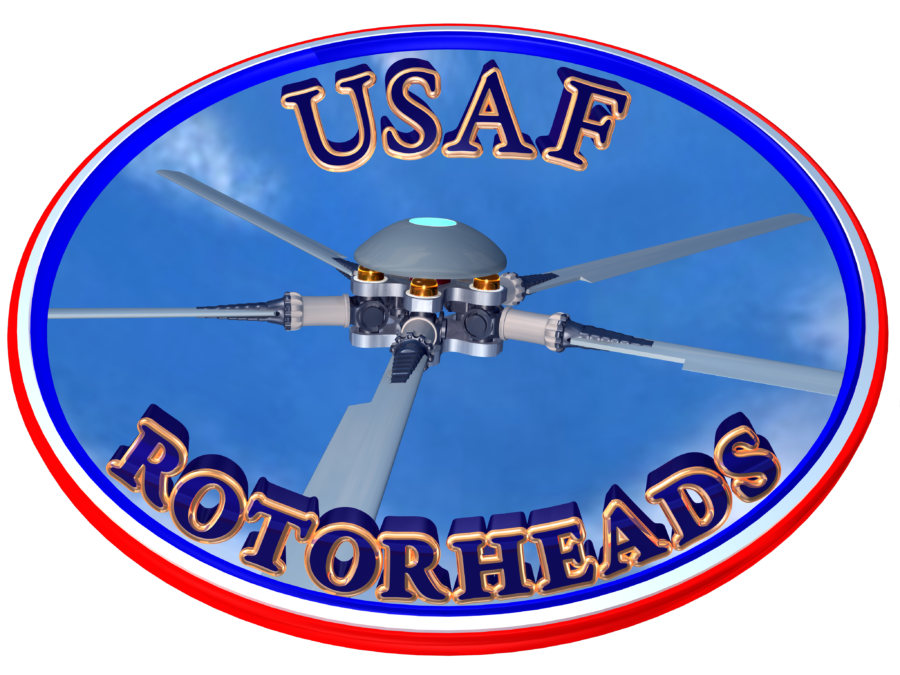General Officers
This purpose of this page is to recognize those individuals who at one time in their Air Force career have flown Air Force Helicopters and either was or became General Officers in the United States Air Force.

1. The first general officer insignia was established by general order on July 14, 1775 which stated "To prevent mistakes, the general officers and their aides-de-camp will be distinguished in the following manner: The Commander-in-Chief by a light blue ribband, worn across his breast, between his coat and waistcoat; the Majors and Brigadier Generals by a pink ribband worn in like manner;…"
2. Stars were first used to identify general officers on June 18, 1780 when it was prescribed that Major Generals would wear two stars and Brigadier Generals one star on each epaulette. Three stars were established in 1798 for the rank of Lieutenant General and were worn by the Commander-in-Chief, General Washington. Four stars were authorized for the rank of General when the rank was established by Act of Congress on July 25, 1866. Grant was the first officer of the Army to hold the rank of General and to wear the insignia of four silver stars.
3. The title of General of the Armies was established after World War I. No special insignia was developed and General Pershing wore four stars. He was the only person appointed as General of the Armies.
4. General of the Army was established by Congress on December 14, 1944 and provided that no more than four officers could be appointed. President Roosevelt appointed Generals George Marshall, Douglas MacArthur, Dwight D. Eisenhower and Henry H. Arnold. Act of Congress, approved September 15, 1950, authorized the President to appoint General Omar N. Bradley to the grade of General of the Army. The insignia of grade for General of the Army is prescribed as five silver stars set in a circle with the coat of arms of the United States, in gold, above the circle of stars.
The current Air Force officer rank names and insignia were borrowed from the Army upon the establishment of the Air Force as a separate service in 1947. This explains why the Air Force has brigadier generals but no brigades. The insignia have been essentially unchanged since then, except for a brief period during the 1990s.
The Army origin explains why the color silver outranks gold in Air Force officer insignia. In the early 19th century, Army infantry colonels wore gold eagles, while all other Army colonels wore silver eagles. When the Army later decided to adopt a single color of eagles for all colonels, that single color was silver, apparently because more silver eagles than gold eagles were already in use. Lieutenant colonels received silver oak leaves next, to match the silver eagles of full colonels. Majors were then given gold oak leaves to distinguish them from lieutenant colonels. Once the precedent of silver outranking gold was set, it was followed when gold bars were later created for second lieutenants, who had no grade-specific insignia until the early 20th century.
During the 1990s, Air Force Chief of Staff General Merrill A. McPeak redesigned the service dress uniform to give it a more distinctive look. His redesign replaced the metal rank insignia for officers with silver braid on the sleeves, similar to the Navy's officer rank insignia. This was done in the traditions of the British Royal Air Force, and the Canadian Forces.
The "McPeak uniform" was very unpopular, drawing comparisons to the jackets worn by airline pilots, and the traditional rank insignia were reinstated shortly after General McPeak's retirement
Air Force Helicopter Pilots Who Became General Officers
---------------------------------------------
- LIEUTENANT GENERAL JAMES S. CASSITY JR. (RIP)
- LIEUTENANT GENERAL WALTER S. HOGLE JR. (Retired)
- LIEUTENANT GENERAL CHARLES L. JOHNSON II (Retired)
- LIEUTENANT GENERAL ROBERT F. RAGGIO (Retired)
- LIEUTENANT GENERAL THOMAS J. TRASK (Retired)
- LIEUTENANT GENERAL DAVID L. VESELY (Retired)
- LIEUTENANT GENERAL MARSHALL B. "BRAD" WEBB (Retired)
- LIEUTENANT GENERAL DONALD C. WURSTER (Retired)
- Order of the Sword Nomination | Induction
- Change of Command
- LIEUTENANT GENERAL JAMES C. SLIFE
---------------------------------------------
- MAJOR GENERAL (CHAPLAIN) CHARLES C. BALDWIN (Retired)
- MAJOR GENERAL JOHN J. BATBIE JR. (Retired)
- MAJOR GENERAL EUGENE R. CHOJNACKI (Retired)
- MAJOR GENERAL RICHARD L. COMER (Retired)
- MAJOR GENERAL MICHAEL "MIKE" N. FARAGE (Retired) - No official bio
- MAJOR GENERAL JOHN C. FLOURNOY JR.
- MAJOR GENERAL JOHN H. FOLKERTS (Retired)
- MAJOR GENERAL CECIL E. FOX (RIP)
- MAJOR GENERAL EUGENE HAASE
- MAJOR GENERAL JAMES F. HINKEL (Retired)
- MAJOR GENERAL JAMES L. HOBSON JR. (Retired)
- MAJOR GENERAL MICHAEL J. KINGSLEY (Retired)
- MAJOR GENERAL MARK A. KYLE
- MAJOR GENERAL EDWARD L. LAFOUNTAINE (Retired)
- MAJOR GENERAL TIMOTHY J. LEAHY (Retired)
- MAJOR GENERAL GREGORY J. LENGYEL (Retired)
- MAJOR GENERAL DONALD P. LITKE (Retired)
- MAJOR GENERAL DONALD A. LOGEAIS (Retired)
- MAJOR GENERAL EDWARD J. NASH (Retired)
- MAJOR GENERAL ALBERT G. ROGERS (Retired)
- MAJOR GENERAL RALPH S. SAUNDERS (RIP)
- MAJOR GENERAL LORAN C. SCHNAIDT (Retired)
- MAJOR GENERAL KIP L. SELF (Retired)
- MAJOR GENERAL STEVEN M. SHEPRO
- MAJOR GENERAL ROBERT B. SIEGFRIED (Retired)
- MAJOR GENERAL WALTER E. WEBB (RIP)
- MAJOR GENERAL VINCENT K. BECKLUND (Retired)
- MAJOR GENERAL CHAD P. FRANKS (Retired)
- MAJOR GENERAL SCOTT A. HOWELL (Retired)
- MAJOR GENERAL KIRK W. SMITH
---------------------------------------------
- BRIGADIER GENERAL BOBBY L. BRITTAIN (Retired)
- BRIGADIER GENERAL JOSEPH T. CALLAHAN III (Retired)
- BRIGADIER GENERAL FRANK CARDILE (Retired)
- BRIGADIER GENERAL CHARLES W. COLLIER JR.
- BRIGADIER GENERAL BRUCE E. DAVIS (Retired)
- BRIGADIER GENERAL CHARLES D. "RICK" ETHREDGE(Retired)
- BRIGADIER GENERAL FRANK KENDALL EVEREST JR. (RIP)
- BRIGADIER GENERAL CHARLES E. FOSTER
- BRIGADIER GENERAL CHARLES E. FOX JR. (Retired)
- BRIGADIER GENERAL HOLLINGSWORTH F. GREGORY (RIP)
- BRIGADIER GENERAL ALBERT V. LUPENSKI
- BRIGADIER GENERAL PAUL A. MAYE (Retired)
- BRIGADIER GENERAL DONALD L. McCORMACK (Retired)
- BRIGADIER GENERAL UDO K. "KARL" McGREGOR
- BRIGADIER GENERAL JAMES W. MCINTYRE (Retired)
- BRIGADIER GENERAL RANDALL A. OGDEN
- BRIGADIER GENERAL MICHAEL F. PLANERT (Retired)
- BRIGADIER GENERAL PHILIP S. PRINCE (Retired)
- BRIGADIER GENERAL BEN T. ROBINSON (Retired)
- BRIGADIER GENERAL STEVEN A. ROSER (Retired)
- BRIGADIER GENERAL F. RANDALL STARBUCK (Retired)
- BRIGADIER GENERAL MARK E. STEARNS (Retired)
- BRIGADIER GENERAL DALE E. STOVALL (Retired)
- BRIGADIER GENERAL BILLY D. THOMPSON
- BRIGADIER GENERAL KENNETH E. TODOROV (Retired)
Integrity, Honor, and Respect
Some of the best things cannot be bought, they must be earned
©2023 USAF Rotorheads All Rights Reserved | Financial Statement

